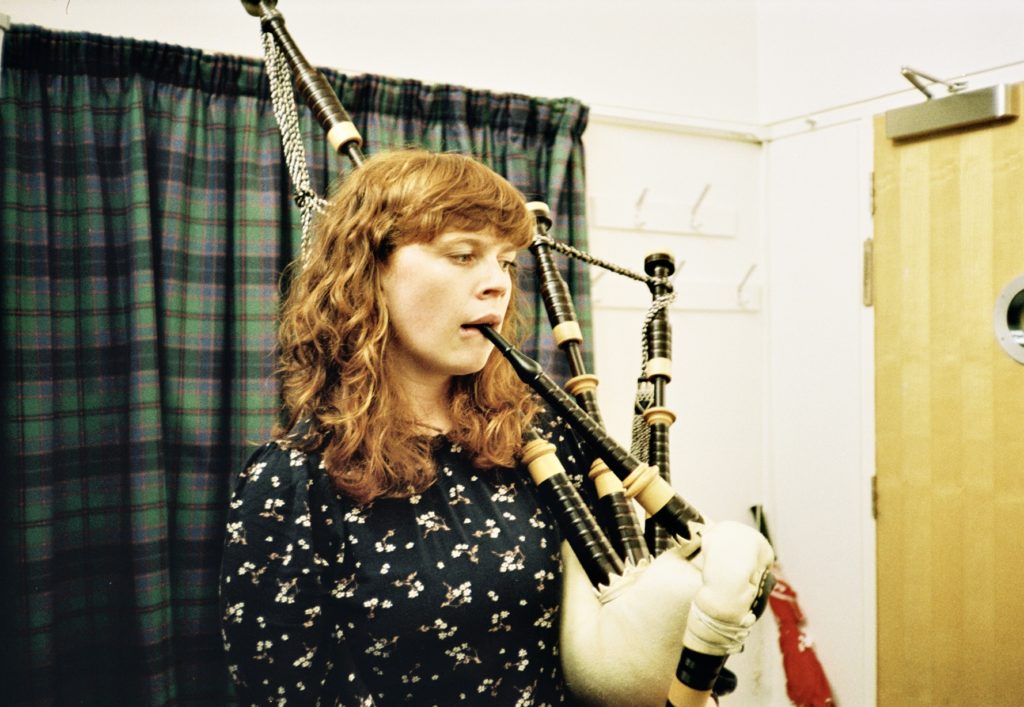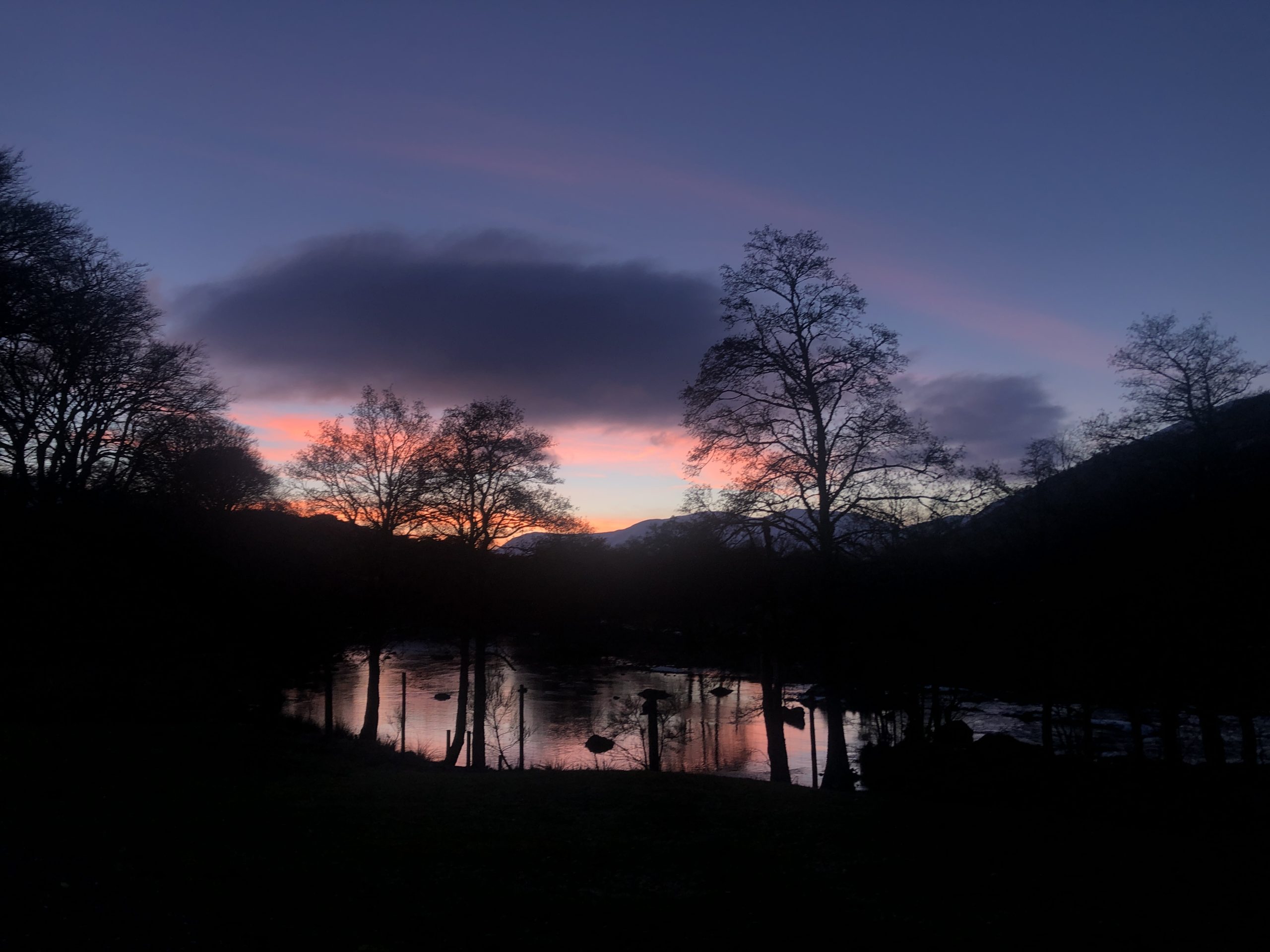As everything started to quieten down last year, I began to think more and more about the concept of silence. Have we ever actually experienced silence in the definitive sense and if so, where? Is it something that exists in nature or something that we humans create? Is it a nice thing? Silence, in many ways, is a device and sometimes a commodity.
Musicians’ Hearing
As musicians, we actively oppose silence. We are essentially paid to go to different places and make noise and maybe even teach others how to make noise, just like us. In our ability to harness noise and channel it into an art form, we are sonically hyperaware. Not long after I left school, I was worried that the hearing in my right ear was possibly deteriorating. All my life, I’ve been exposed to the sound of one of the loudest acoustic instruments there is, so my concerns were taken seriously and I was referred to Stracathro Hospital for an Audiology exam.
The hearing test consisted of a series of identical tones, played in a rhythm, at a progressively quieter level. I was put in a soundproof booth, the atmosphere within which, reminded me of the treated acoustics of practice rooms and recording studios. I had to click a button when, or if, I heard the tone and, surprisingly, I got full marks. Later, I remember thinking that the test wasn’t really suitable for musicians, as I knew which pitch to listen out for and when to listen out for it. I was convinced that if the tones and the spaces between them had been more randomised, I would have missed quite a few of them.
Having thought about it further, the test was there to determine whether or not I could hear the tones and if I fitted into the bracket of ‘normal hearing’ – which I did. As this was my first test, the audiologist couldn’t determine how well I could hear them in comparison to previous years. As a group of experts in sound, perhaps musicians have a harder time finding silence.
Silent at Night
Practice rooms and recording studios are purpose-built to be silent but these certainly aren’t pockets of natural silence. The only other places where I can say I’ve experienced true, complete silence are in dense pine forests when there isn’t a breath of wind or in my parents’ house in Kirriemuir.
The situation of Kirrie – the town where I latterly grew up and went to school – is quite fundamental to its frequent and sustained silence. It used to be a market town but now takes on the role of dormitory settlement for Dundee and Aberdeen and probably Perth. I learnt this in Higher Geography along with how to draw an annotated diagram of the hydro-cycle, the socio-economic status of Sierra Leone and the difference between attrition and abrasion.
Most people are in for the night after about nine o’clock so the sounds of voices and car engines start to diminish as the population puts its feet up to watch Netflix. The town is very far inland, Kirriemuir sometimes being referred to as ’The Gateway to the Glens.’ There is no major river running through the town and it’s far enough away from the A90 that the artics sneak past, unheard. It’s particularly quiet at this time of year, just after the harvest, when farm animals, machinery and vehicles are inside for the night. On a very still night, one of the only sounds you can hear at the bottom end of Southmuir, is the ringing of the Old Parish Church bells from the town square, half a mile away.
Single Tracks and Motorways

As a music student, I spent the second two years of my degree living in South Uist, where there was never silence. There was almost always wind and when there wasn’t any wind, you could hear the sea. An unsettling, menacing roar from beyond the dunes at the edge of the machair. My two-year stint in Uist, where the band Hecla was formed, was book-ended by tenancies of Glasgow flats and I noticed that the ebb and flow of city traffic was remarkably similar to the sound of the wind and the sea. Don’t be fooled, the ‘spine route’ of Uist isn’t exactly what you’d expect from a single-track road – it’s a high-speed thoroughfare with all the same kinds of traffic found on the motorway. I’ve seen as many blue and yellow D. R. MacLeod, white Barratlantic and orange Hebridean Haulage lorries on the Clydeside Expressway as I’ve seen on the stretch between Stilligarrry and Grogarry. I was just very taken with the idea that these two ostensibly different settings could have such kindred acoustics and that I couldn’t find natural silence anywhere.
Maybe silence is something that we make rather than something that we can find. Humans create silence all the time and it can cause us to feel, and allows us to express, many different things, depending on the scenario:
-
- An awkward silence
- A minute’s silence
- A rest in music
- The silent treatment
- Someone or something falling silent
- An eery silence
- A sponsored silence
- Impeccable timing in a comedy show
Silence in Music
I like the idea of silence having the ability to cause tension and also cause relief. I suppose music has these qualities too. Maybe that’s why, as a musician, I’ve become a bit fixated on it. The lack of sound is the opposite of an abundance of sound, and like the sounds found in the seemingly opposite landscapes of South Uist and Glasgow, somehow the juxtaposing concepts of silence and music can be quite alike, in the way that they affect us.
A technique often used by instrumentalists, is to put a ‘lift’ into the music in order to create excitement when the band comes back in. It can be used in the middle of phrases or when changing key or idiom and it’s the momentary employment of silence that creates a springboard for the audience to land on, before vaulting into the next part of the set.
If you’ve ever worked (or been a straggler) in a bar at chucking out time when the coolers are turned off, you’ve probably noticed that there had been relentless noise occupying your subconscious all along, and it was such an unexpected relief that you wondered how you hadn’t realised it was there. The same thing happens when a cooker hood is finally switched off or when there’s a power cut in an apparently quiet space and you hear the whole room descending in pitch, followed by silence, and sometimes darkness.
Seeking Silence
My fascination with, and craving for silence maybe stems from the fact that my job as a piping instructor at the National Piping Centre involves hearing many different sets of pipes being played simultaneously through the walls of the old College of Piping in Otago Street. My frequent use of the Glasgow subway between Kelvinbridge and Cowcaddens to teach lessons at the main building at the top of Hope Street was another loud and turbulent experience I encountered on a daily basis, before lockdown.
Our trouble in tracking silence down might suggest that we’re seeking a mystical fantasy town where solace is short-lived and refuge fabricated (much like our time spent in recording booths.) My deadlock in escaping din encouraged me to find compromise. I became more drawn to the idea of a truce somewhere in the suburbs of silence. Maybe what I needed was not ‘the complete absence of any sound’ but something more attainable and accessible.
Is silence just a human state?
As children, we learn about silence, usually from our parents and teachers. It’s very rare that these school and home environments where we’re so often told to be silent, actually give us silence in return. Maybe being silent is more of a human state than a human situation.
During my many months on furlough, then back in full-time education, followed by the on-going rebuilding of my music-related workload, I started to focus less on chasing silence and set off in search of places where I could be silent and where my surroundings complimented this.
Here’s a list of places where I found complete inner peace, stillness and contentment:
-
- Hunkering down next to a fire, hearing the logs and twigs popping, hissing and crackling and the rustling of puffy jackets and the clinking of glasses full of single malt and ginger ale (for our sins) in the hands of the kind souls around me.
- Walking through a mature woodland, in a glen, in the wind, hearing the squeaking of branches and the long sighs of leaves in the canopy.
- Sitting on my jacket, eating peaches from a can at 8am on a sheltered beach, listening to tiny waves lapping on the shore and watching swallows catching beasties in their beaks.
- Standing in the middle of an island road, in a rainstorm, in the dark, feeling the heavy, lukewarm raindrops bouncing off my scalp.
- Lying down on grass, feeling fine, cold raindrops pattering on my face, while tasting Prosecco and leftover Bounty from a box of Celebrations and smelling grass that had been through a flock of sheep.
- Being at the top of a small island hill and witnessing the steady and unnoticeable movement of boats in the sea, like the minute hand of a clock, feeling the warmth of the sun on my skin and hearing nothing but breathing, my own heartbeat and the crinkling of sandwiches wrapped in tin foil.
- Perching on a log on top of the same hill, months previously, seeing the flamingo-pink skies; jaggy, distant, purple mountains; snow-capped hills; deep blue waters; a canary yellow sunset and browning green all around, while slurping mint hot chocolate from a capsule flask and blinking tears of hope, gratitude and overwhelming belonging out of my weary eyes.



Silence is Opportunity
Of all the places I’ve lived and stayed in the past few years, my parents’ house is by far the quietest when everyone eventually goes to bed. I think my mum, in particular, enjoys the quiet life, however, with silence comes opportunity – a blank canvas if you will. Perhaps rather naïvely, she married a piper and gave birth to another. My wee sister took it a stage further, becoming a pipe band snare drummer at the age of 9.
As we begin to return to a version of the world we knew back in March 2020, I hope that you have had some time to think about what is important to you, and how you’re going to make sure those things are part of your continuing life. We didn’t stop being, growing, changing or living, we just had a moment in our existence where we stayed still and waited until it was OK to start moving again. The earth still turned, we still saw the sun, the moon, Venus and the birds in the sky. We noticed the transition from spring to summer and the yellowing of the broom. You learnt that broom is actually a member of the pea family and if you were lucky, you heard its pods snapping in the late June sun.
In many ways, this is a time of renewal and of prospect. A time when the silent stages of concert halls and theatres, bars and clubs can again play host to musicians, dancers, actors and speakers and we can share our messages face to face once more.

📷 Photo of Ailis Sutherland at Piping Live! 2021 by Kim Carnie.
📷 All landscape/skyscape photos by Ailis Sutherland.





